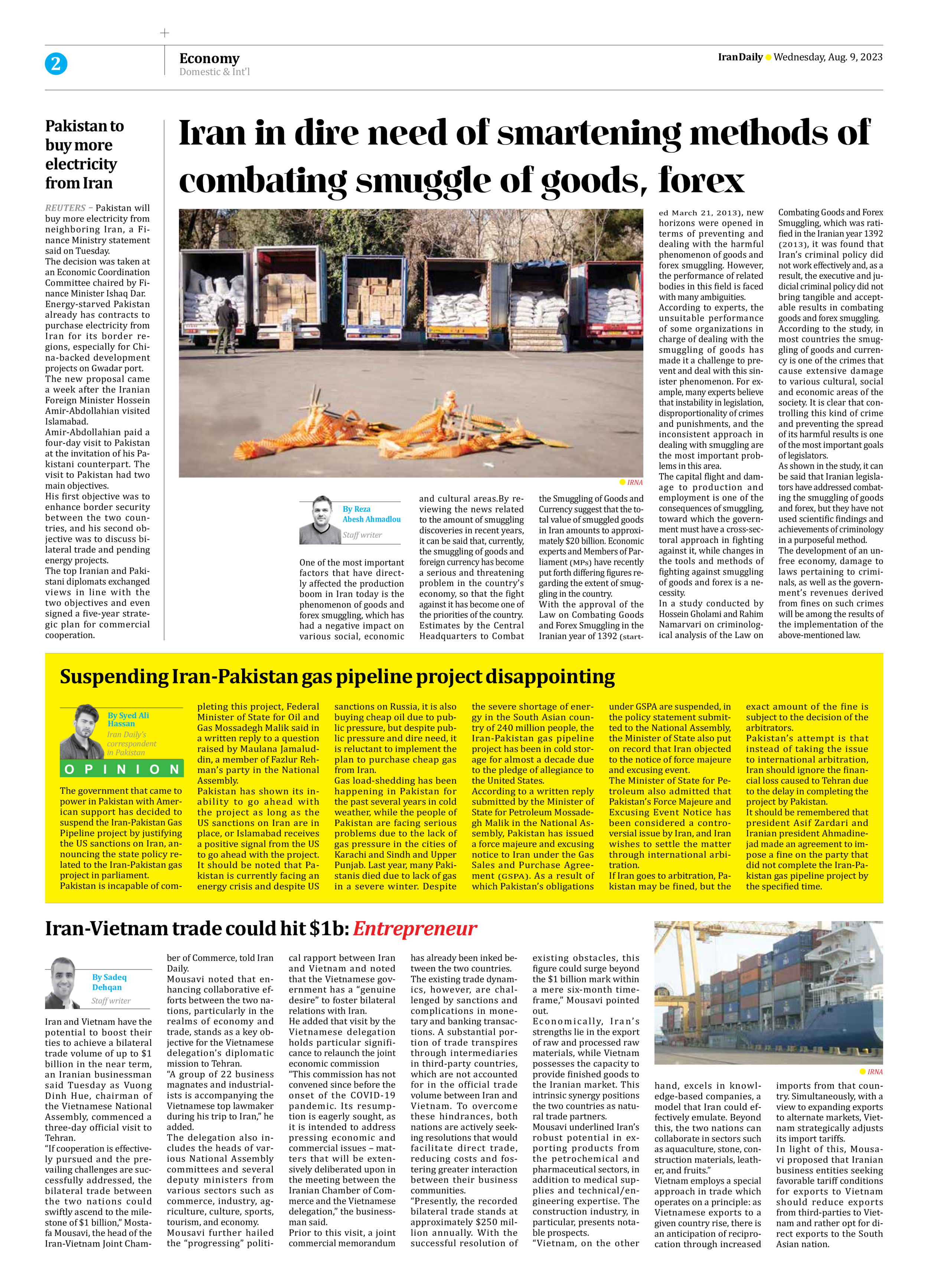
Iran-Vietnam trade could hit $1b: Entrepreneur
By Sadeq Dehqan
Staff writer
Iran and Vietnam have the potential to boost their ties to achieve a bilateral trade volume of up to $1 billion in the near term, an Iranian businessman said Tuesday as Vuong Dinh Hue, chairman of the Vietnamese National Assembly, commenced a three-day official visit to Tehran.
“If cooperation is effectively pursued and the prevailing challenges are successfully addressed, the bilateral trade between the two nations could swiftly ascend to the milestone of $1 billion,” Mostafa Mousavi, the head of the Iran-Vietnam Joint Chamber of Commerce, told Iran Daily.
Mousavi noted that enhancing collaborative efforts between the two nations, particularly in the realms of economy and trade, stands as a key objective for the Vietnamese delegation’s diplomatic mission to Tehran.
“A group of 22 business magnates and industrialists is accompanying the Vietnamese top lawmaker during his trip to Iran,” he added.
The delegation also includes the heads of various National Assembly committees and several deputy ministers from various sectors such as commerce, industry, agriculture, culture, sports, tourism, and economy.
Mousavi further hailed the “progressing” political rapport between Iran and Vietnam and noted that the Vietnamese government has a “genuine desire” to foster bilateral relations with Iran.
He added that visit by the Vietnamese delegation holds particular significance to relaunch the joint economic commission
“This commission has not convened since before the onset of the COVID-19 pandemic. Its resumption is eagerly sought, as it is intended to address pressing economic and commercial issues – matters that will be extensively deliberated upon in the meeting between the Iranian Chamber of Commerce and the Vietnamese delegation,” the businessman said.
Prior to this visit, a joint commercial memorandum has already been inked between the two countries.
The existing trade dynamics, however, are challenged by sanctions and complications in monetary and banking transactions. A substantial portion of trade transpires through intermediaries in third-party countries, which are not accounted for in the official trade volume between Iran and Vietnam. To overcome these hindrances, both nations are actively seeking resolutions that would facilitate direct trade, reducing costs and fostering greater interaction between their business communities.
“Presently, the recorded bilateral trade stands at approximately $250 million annually. With the successful resolution of existing obstacles, this figure could surge beyond the $1 billion mark within a mere six-month timeframe,” Mousavi pointed out.
Economically, Iran’s strengths lie in the export of raw and processed raw materials, while Vietnam possesses the capacity to provide finished goods to the Iranian market. This intrinsic synergy positions the two countries as natural trade partners.
Mousavi underlined Iran’s robust potential in exporting products from the petrochemical and pharmaceutical sectors, in addition to medical supplies and technical/engineering expertise. The construction industry, in particular, presents notable prospects.
“Vietnam, on the other hand, excels in knowledge-based companies, a model that Iran could effectively emulate. Beyond this, the two nations can collaborate in sectors such as aquaculture, stone, construction materials, leather, and fruits.”
Vietnam employs a special approach in trade which operates on a principle: as Vietnamese exports to a given country rise, there is an anticipation of reciprocation through increased imports from that country. Simultaneously, with a view to expanding exports to alternate markets, Vietnam strategically adjusts its import tariffs.
In light of this, Mousavi proposed that Iranian business entities seeking favorable tariff conditions for exports to Vietnam should reduce exports from third-parties to Vietnam and rather opt for direct exports to the South Asian nation.







